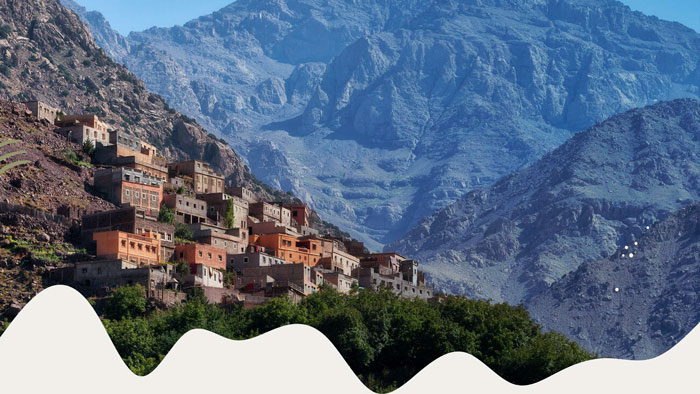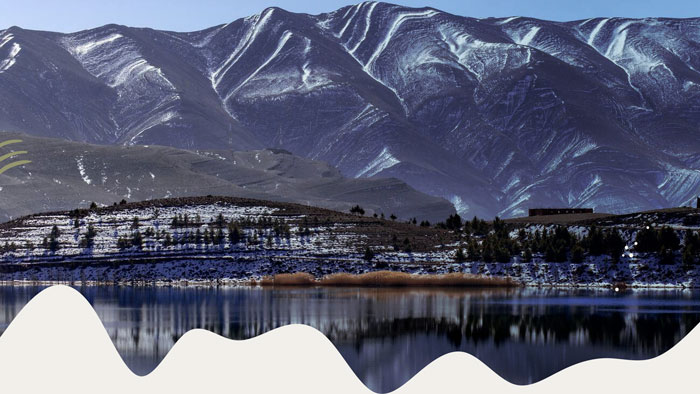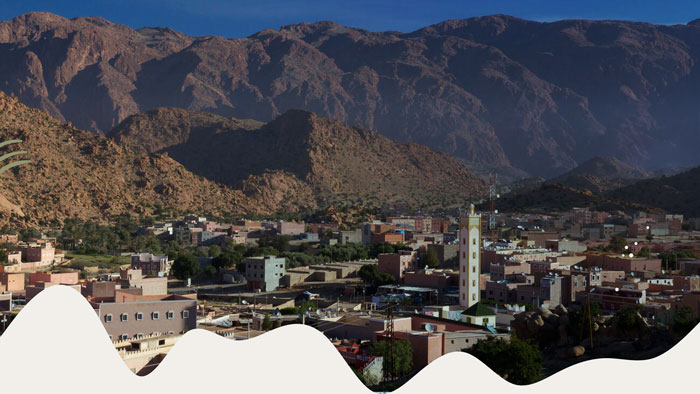
UNESCO World Heritage Sites in Morocco You Need to Visit
Introduction: Discover Morocco’s Living Heritage
Art, architecture, and history intertwine beautifully across Morocco, but nowhere is this cultural richness more evident than in its UNESCO World Heritage Sites. From ancient medinas echoing with the sounds of daily life to Roman ruins frozen in time, each site tells a story of the civilizations that shaped this North African gem.
UNESCO (the United Nations Educational, Scientific and Cultural Organization) designates these places as World Heritage Sites because of their outstanding universal value — meaning they are treasures not only for Morocco but for all humanity. These sites preserve centuries of artistry, spirituality, and craftsmanship, showcasing how Moroccan identity has evolved through Berber, Arab, Andalusian, and European influences.
Visiting them isn’t just about sightseeing; it’s a journey through Morocco’s living history. As you wander through the labyrinthine alleys of Fez, stand before the majestic gates of Meknes, or watch the sun cast golden hues over Ait Ben Haddou, you experience the essence of a country where tradition and modernity coexist in perfect harmony.
In this guide, we’ll explore the 9 official UNESCO World Heritage Sites in Morocco, each one a masterpiece of architecture, culture, and heritage that you simply must visit.
1. Medina of Fez – The Heart of Moroccan Civilization
The Medina of Fez (Fès el-Bali) is one of the oldest and best-preserved medieval cities in the world, earning its UNESCO World Heritage status in 1981. Founded in the 9th century, Fez became a center of religion, education, and craftsmanship, often referred to as the spiritual capital of Morocco.
A Journey Through Time
Step into the medina, and you’ll find yourself in a living museum — a maze of narrow alleys, bustling souks, and ancient mosques that have remained largely unchanged for centuries. Unlike most historical cities, Fez is not frozen in the past; its traditions are still alive. Craftsmen continue to hand-dye leather at the famous Chouara Tanneries, and artisans create intricate zellige tiles, brass lamps, and carved woodwork just as their ancestors did.

Highlights You Shouldn’t Miss
-
Al-Qarawiyyin University – Founded in 859 AD, it is recognized by UNESCO and the Guinness World Records as the world’s oldest continuously operating university.
-
Bou Inania Madrasa – A masterpiece of Marinid architecture, famous for its cedar carvings, zellige tiles, and marble floors.
-
Nejjarine Fountain and Museum – Showcases traditional Moroccan woodcraft and offers a peaceful spot in the medina’s heart.
-
Bab Boujloud (Blue Gate) – The most iconic entrance to the old city, a stunning example of traditional Moroccan design.
Why It’s UNESCO-Listed
The Medina of Fez represents a complete urban fabric of the medieval Islamic world. Its architecture, layout, and living traditions have remained intact for over a millennium, making it a unique example of how cultural heritage can continue to thrive in a modern world.
Travel Tip
Wear comfortable shoes and prepare to get lost — that’s part of the charm! Consider hiring a local guide to navigate the labyrinthine alleys and discover hidden gems like traditional riads, madrassas, and artisan cooperatives.
2. Medina of Marrakech – The Red City’s Timeless Pulse
Designated a UNESCO World Heritage Site in 1985, the Medina of Marrakech embodies the soul of Morocco — vibrant, colorful, and alive with history. Known as the “Red City” for its terracotta walls and sun-drenched architecture, Marrakech has been a crossroads of culture, trade, and tradition for nearly a thousand years.
A Living Cultural Hub
Founded in the 11th century by the Almoravid dynasty, Marrakech quickly rose to prominence as a center of commerce and learning. Today, it remains one of the most dynamic cities in North Africa, where the hum of modern life blends effortlessly with the echoes of the past. Within the ancient walls, you’ll find mosques, palaces, gardens, and souks that pulse with energy from dawn till dusk.

Highlights You Shouldn’t Miss
-
Jemaa el-Fna Square – The beating heart of Marrakech. By day, it’s a lively market; by night, it transforms into a stage filled with storytellers, musicians, and street food vendors.
-
Koutoubia Mosque – The city’s most recognizable landmark, its 12th-century minaret inspired the Giralda Tower in Seville.
-
Bahia Palace – A stunning 19th-century palace with exquisite courtyards, zellige mosaics, and tranquil gardens.
-
Saadian Tombs – Hidden for centuries, these ornate tombs reveal the artistry of Morocco’s golden age.
-
Majorelle Garden & Yves Saint Laurent Museum – Though outside the medina walls, these are must-sees for their artistic beauty and cultural influence.
Why It’s UNESCO-Listed
The Medina of Marrakech is recognized for its architectural masterpieces, living traditions, and cultural exchange that influenced the Islamic West. It remains an exceptional example of a historic city that has preserved its original character while adapting to modern life.
Travel Tip
Visit Jemaa el-Fna at sunset — the square comes alive with the rhythm of drums, the aroma of grilled meats, and the glow of lanterns. For the best panoramic view, grab mint tea on a rooftop café overlooking the square as the city transitions from day to night.
3. Ksar of Ait-Ben-Haddou – Hollywood’s Desert Fortress
Recognized as a UNESCO World Heritage Site in 1987, the Ksar of Ait-Ben-Haddou stands as a breathtaking example of traditional earthen architecture in southern Morocco. Nestled between the High Atlas Mountains and the edge of the Sahara Desert, this fortified village (or ksar) looks like something out of a storybook — and indeed, it has inspired countless films and TV shows.
A Glimpse into Morocco’s Desert Heritage
Dating back to the 17th century, Ait-Ben-Haddou was once a key stop along the ancient caravan route between Marrakech and Timbuktu. Traders passing through carried salt, gold, spices, and stories, leaving behind a cultural blend still visible in the site’s architecture. Built entirely from mud-brick and straw, the ksar’s structures blend seamlessly with the desert landscape, glowing in shades of gold and red under the Moroccan sun.

Highlights You Shouldn’t Miss
-
The Fortified Village (Ksar) – Wander through narrow alleys lined with old granaries, kasbahs, and traditional homes that have withstood centuries of wind and sand.
-
The Granary (Agadir) – Located at the top of the hill, it offers panoramic views of the Ounila Valley and surrounding desert.
-
Film Location Sites – Ait-Ben-Haddou has starred in classics like Gladiator, Lawrence of Arabia, The Mummy, and even Game of Thrones.
-
The Old Caravan Route – Walk the same path that once connected merchants between the Sahara and the Atlantic.
Why It’s UNESCO-Listed
Ait-Ben-Haddou is recognized for being an outstanding example of southern Moroccan earthen architecture, reflecting traditional pre-Saharan building techniques that are slowly disappearing. Its preservation highlights Morocco’s commitment to safeguarding architectural heritage in challenging desert conditions.
Travel Tip
Visit early in the morning or near sunset for magical lighting and fewer crowds. For an authentic experience, stay overnight in a nearby guesthouse built in traditional kasbah style, and watch the ksar glow beneath the stars — a scene you’ll never forget.
4. Historic City of Meknes – The Imperial Legacy
The Historic City of Meknes was inscribed as a UNESCO World Heritage Site in 1996. Known as one of Morocco’s imperial cities, Meknes showcases the grandeur of the Alawite dynasty, particularly under Sultan Moulay Ismail, who transformed the city into a symbol of power, wealth, and architectural sophistication in the 17th century.
A Royal Experience
Meknes combines military fortifications, grand palaces, and bustling markets to create a city that reflects Morocco’s imperial glory. Unlike some other imperial cities, Meknes is quieter and less crowded, offering visitors a more authentic glimpse into Moroccan history.

Highlights You Shouldn’t Miss
-
Bab Mansour Gate – Considered one of Morocco’s most magnificent gates, it features intricate zellige tilework and imposing stone pillars.
-
Moulay Ismail Mausoleum – The final resting place of the powerful sultan, adorned with exquisite Moroccan artistry.
-
Royal Stables and Granaries (Heri es-Souani) – A remarkable feat of engineering that once housed thousands of horses and stored grain for the royal army.
-
Meknes Medina – Explore traditional souks and local markets, where centuries-old crafts are still practiced today.
-
Nearby Volubilis – Just a short drive from Meknes, this Roman archaeological site complements your imperial journey with ancient history.
Why It’s UNESCO-Listed
The Historic City of Meknes exemplifies Morocco’s imperial urban planning, blending military, residential, and religious architecture. Its monuments and medina preserve the cultural and political significance of the Alawite dynasty and offer insight into the country’s historical evolution.
Travel Tip
Take a walking tour to appreciate the city’s hidden riads and gardens, and enjoy panoramic views from the city walls. Visiting Meknes in the morning allows you to experience the medina before it becomes lively with local shoppers and vendors.
Discover Morocco’s UNESCO Treasures!
Ready to explore Morocco like never before? From the ancient medinas of Fez and Marrakech to the desert fortress of Ait-Ben-Haddou and the coastal charm of Essaouira, every UNESCO World Heritage Site tells a story waiting to be experienced.
✅ Plan your journey today and immerse yourself in centuries of culture, architecture, and tradition.
✅ Book guided tours, cultural experiences, or desert adventures to get the most out of every site.
✅ Capture unforgettable memories as you walk through living history in Morocco.
Don’t wait! Start your Moroccan adventure and explore its world-class heritage today.
5. Archaeological Site of Volubilis – Echoes of the Roman Empire
The Archaeological Site of Volubilis was inscribed as a UNESCO World Heritage Site in 1997. Located near Meknes, Volubilis is the best-preserved Roman site in Morocco and offers a fascinating glimpse into the country’s ancient history before the Islamic era.
A Step Back in Time
Founded in the 3rd century BC and later developed under Roman rule, Volubilis was a thriving administrative center of the province of Mauretania Tingitana. The site showcases the blend of Roman engineering and local Moroccan culture, evident in its mosaics, basilicas, arches, and residential compounds.

Highlights You Shouldn’t Miss
-
Triumphal Arch of Caracalla – Erected in 217 AD, this arch remains a symbol of Roman architectural grandeur in North Africa.
-
Mosaics and Villas – Beautifully preserved floor mosaics depict mythological scenes, hunting, and daily life.
-
Basilicas and Public Buildings – These structures reveal the political and civic organization of the Roman city.
-
Olive Oil Presses and Agriculture Remains – Highlight the economic importance of olive cultivation in the region.
Why It’s UNESCO-Listed
Volubilis is recognized for its exceptional Roman urban planning and archaeological significance, representing the northernmost reach of the Roman Empire in Africa. Its preservation allows historians and visitors alike to understand the spread of Roman civilization and its integration with local cultures.
Travel Tip
Visit in the early morning or late afternoon to avoid the midday heat and enjoy the golden light on the ruins. Don’t forget a guided tour to fully appreciate the history behind each mosaic, arch, and column.
6. Medina of Tétouan – The White Dove of the North
The Medina of Tétouan, inscribed as a UNESCO World Heritage Site in 1997, is often called the “White Dove of the North” due to its striking whitewashed buildings and serene atmosphere. Located near the Mediterranean coast, Tétouan stands out for its Andalusian influence, preserved from the arrival of refugees fleeing Spain in the 15th century.
A Blend of Cultures
Tétouan’s medina reflects a unique fusion of Andalusian and Moroccan architectural styles. Its streets are organized, elegant, and quieter compared to the bustling medinas of Fez or Marrakech. This calm, orderly layout makes it a rare example of an Andalusian-style city in North Africa, showcasing how cultural migration shaped urban life.

Highlights You Shouldn’t Miss
-
Whitewashed Houses and Narrow Streets – A peaceful, photogenic maze of alleys and courtyards.
-
Ethnographic Museum of Tétouan – Displays traditional crafts, costumes, and historical artifacts from the region.
-
Artisan Workshops – Experience local craftsmanship, including pottery, leatherwork, and silver jewelry.
-
Royal Palace and Surrounding Gardens – Though not always open to the public, the palace architecture is a striking landmark.
Why It’s UNESCO-Listed
The Medina of Tétouan is recognized for being the best-preserved example of an Andalusian-style medina in Morocco, highlighting centuries of cultural exchange between Spain and North Africa. Its authenticity and urban coherence make it a living testimony to historical migration and architectural adaptation.
Travel Tip
Hire a local guide to explore the medina’s intricate alleys and hidden courtyards. Don’t miss visiting the artisan workshops to see traditional techniques passed down for generations.
7. Medina of Essaouira – The Coastal Gem
The Medina of Essaouira, formerly known as Mogador, was designated a UNESCO World Heritage Site in 2001. Nestled along Morocco’s Atlantic coast, Essaouira stands out for its unique blend of European and Moroccan architectural styles, reflecting its history as an important trading port.
A Fortress by the Sea
Founded in the 18th century by Sultan Mohammed ben Abdallah, Essaouira was designed as a fortified port city. Its ramparts, bastions, and harbor were meticulously planned to accommodate both defense and commerce. Today, it remains one of the best-preserved coastal medinas in North Africa, offering visitors a mix of history, culture, and seaside charm.

Highlights You Shouldn’t Miss
-
Skala de la Ville – The iconic sea-facing ramparts with historic cannons and stunning ocean views.
-
Fishing Port – A bustling center where locals sell the day’s catch; perfect for fresh seafood.
-
Medina Streets and Souks – Explore narrow alleys lined with art galleries, craft shops, and traditional markets.
-
Gnawa World Music Festival – Held annually, celebrating Morocco’s rich musical heritage.
-
Art Galleries and Workshops – Essaouira has a thriving artistic community, especially known for woodwork and painting.
Why It’s UNESCO-Listed
Essaouira’s medina is a unique example of 18th-century fortified town planning, combining functional European military architecture with traditional Moroccan urban layout. Its authenticity and coastal character make it a living heritage site of international importance.
Travel Tip
Visit early in the morning to see the port at its busiest and the medina streets waking up. Stay for sunset at the ramparts to capture breathtaking views of the Atlantic and the city’s terracotta rooftops.
8. Portuguese City of Mazagan (El Jadida) – Morocco’s Coastal Fortress
The Portuguese City of Mazagan, now known as El Jadida, was inscribed as a UNESCO World Heritage Site in 2004. Located on Morocco’s Atlantic coast, this fortified town is a remarkable example of European military architecture integrated into a Moroccan setting.
A Testament to Cross-Cultural Exchange
Built by the Portuguese in the 16th century, Mazagan was designed to protect their trading interests along the Moroccan coast. Its layout demonstrates advanced fortification techniques, including bastions, cisterns, and ramparts. The city reflects a fusion of European Renaissance planning and Moroccan architectural traditions, highlighting centuries of cultural interaction.

Highlights You Shouldn’t Miss
-
Portuguese Cistern – An underground marvel with vaulted ceilings and dramatic lighting; a must-visit for photography enthusiasts.
-
Church of the Assumption – Showcases the European influence on the city’s religious architecture.
-
Fortress Ramparts – Walk along the well-preserved walls and enjoy views of the Atlantic Ocean.
-
Old Town Streets – Explore cobblestone lanes lined with historic houses that reflect the city’s colonial past.
Why It’s UNESCO-Listed
Mazagan is recognized for being an exceptional example of Portuguese fortified architecture adapted to a foreign environment, demonstrating how European colonial urban planning influenced local Moroccan settlements. Its preservation allows visitors to witness a unique chapter in Morocco’s coastal history.
Travel Tip
Visit the cistern during midday when sunlight filters through the openings, creating a magical interplay of light and shadow. Combine your trip with a stroll along the nearby beachfront to enjoy the Atlantic breeze.
9. Rabat – Modern Capital with Ancient Roots
The city of Rabat, Morocco’s capital, was inscribed as a UNESCO World Heritage Site in 2012. Unlike other historic medinas, Rabat represents a unique blend of ancient and modern urban planning, combining historic monuments with a thoughtfully designed modern cityscape.
A City of History and Vision
Rabat’s heritage spans several eras — from the 12th-century Almohad dynasty to French colonial urban planning in the 20th century. The UNESCO designation recognizes both the city’s historical landmarks and its modern development, making Rabat an exceptional example of a capital that balances tradition and contemporary life.

Highlights You Shouldn’t Miss
-
Hassan Tower – An unfinished minaret from the 12th century, symbolizing Almohad architectural ambition.
-
Mausoleum of Mohammed V – A stunning example of modern Alaouite architecture housing the tombs of Moroccan royalty.
-
Kasbah of the Udayas – A fortified citadel overlooking the Bou Regreg River, featuring Andalusian gardens and narrow blue-and-white streets.
-
Chellah Necropolis – Ancient Roman and medieval Islamic ruins set in tranquil gardens, offering a glimpse into centuries of Moroccan history.
-
Modern City Center – French colonial-era boulevards and squares reflect careful urban planning integrated with historical landmarks.
Why It’s UNESCO-Listed
Rabat is recognized for being an outstanding example of a 20th-century capital city built on the foundations of a historic urban center. Its preservation demonstrates how modern planning can coexist with centuries of architectural and cultural heritage, offering lessons in urban sustainability and cultural integration.
Travel Tip
Combine visits to the Kasbah of the Udayas and Hassan Tower for stunning photography opportunities, especially at sunset. Explore the Chellah gardens for a peaceful stroll through history away from the bustling city streets.
Conclusion: Morocco – A Living Museum of Heritage
Morocco’s UNESCO World Heritage Sites are more than just tourist attractions; they are living testimonies to centuries of culture, art, and history. From the bustling medinas of Fez and Marrakech to the serene whitewashed streets of Tétouan, from the desert fortress of Ait-Ben-Haddou to the Roman ruins of Volubilis, each site offers a unique glimpse into the rich tapestry of Moroccan civilization.
Visiting these sites allows travelers to experience the fusion of Arab, Berber, Andalusian, and European influences that have shaped the country over millennia. They are not frozen in time — artisans still practice traditional crafts, markets continue to thrive, and cultural festivals bring history to life.
Whether you’re wandering through the fortified streets of Mazagan, exploring the artistic soul of Essaouira, or admiring Rabat’s blend of historic and modern urban planning, Morocco offers a living museum of heritage that captivates every visitor.
Plan Your Journey
Immerse yourself in Morocco’s cultural treasures, witness centuries of architectural brilliance, and walk the paths of history in some of the most remarkable UNESCO World Heritage Sites in the world. Your journey through Morocco is not just a trip — it’s an unforgettable encounter with history, tradition, and beauty.
